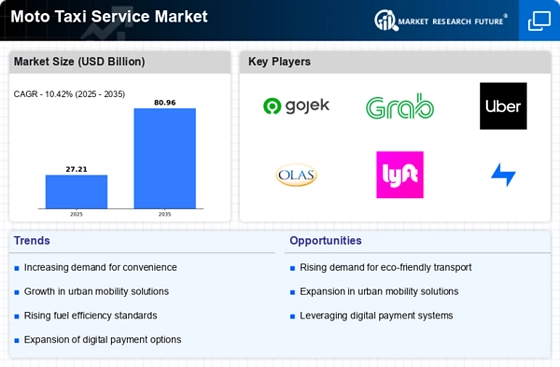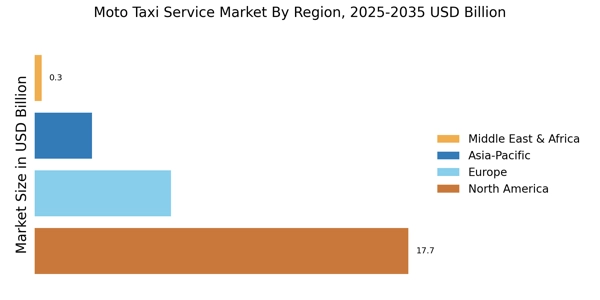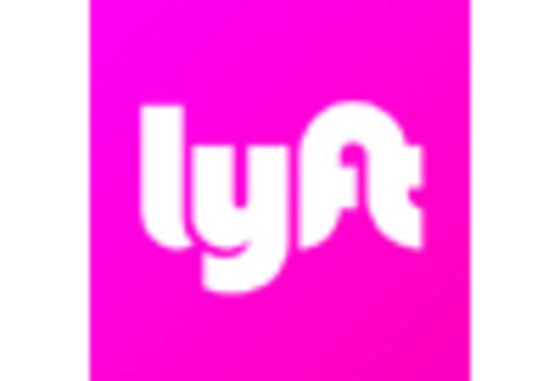The Moto Taxi Service Market is currently characterized by a dynamic competitive landscape, driven by rapid urbanization, increasing demand for efficient transportation solutions, and the proliferation of mobile technology. Key players such as Gojek (ID), Grab (SG), and Uber (US) are at the forefront, each adopting distinct strategies to enhance their market positioning. Gojek (ID) focuses on diversifying its service offerings beyond transportation, integrating food delivery and digital payments, which appears to strengthen customer loyalty and increase user engagement. Meanwhile, Grab (SG) emphasizes regional expansion and strategic partnerships, particularly in Southeast Asia, to consolidate its market share and enhance service accessibility. Uber (US), on the other hand, is investing heavily in technological innovation, particularly in AI and autonomous vehicle research, which may redefine its operational efficiency and customer experience.
The business tactics employed by these companies reflect a moderately fragmented market structure, where localized strategies play a crucial role. For instance, companies are increasingly localizing their service offerings to cater to specific regional needs, optimizing their supply chains to enhance service delivery. This localized approach not only fosters customer satisfaction but also allows for competitive differentiation in a market where consumer preferences can vary significantly across regions.
In August 2025, Gojek (ID) announced a partnership with local governments to enhance its fleet's sustainability by integrating electric motorcycles into its service. This strategic move is likely to position Gojek as a leader in eco-friendly transportation solutions, appealing to environmentally conscious consumers and aligning with global sustainability trends. Such initiatives may also provide Gojek with a competitive edge in regulatory environments increasingly favoring green technologies.
In September 2025, Grab (SG) launched a new feature that allows users to book moto taxis directly through its food delivery app. This integration not only streamlines user experience but also capitalizes on the growing trend of multi-service platforms. By enhancing convenience, Grab (SG) may effectively increase its user base and drive higher engagement across its services, thereby reinforcing its market dominance in the region.
In October 2025, Uber (US) unveiled a new AI-driven routing system designed to optimize ride-sharing efficiency for moto taxis. This innovation is expected to reduce wait times and improve overall service reliability, which could significantly enhance customer satisfaction. By leveraging advanced technology, Uber (US) appears to be positioning itself as a tech-forward leader in the moto taxi sector, potentially attracting a tech-savvy demographic that prioritizes efficiency and innovation.
As of October 2025, the competitive trends within the Moto Taxi Service Market are increasingly defined by digitalization, sustainability, and the integration of artificial intelligence. Strategic alliances are becoming more prevalent, as companies seek to enhance their service offerings and operational capabilities. Looking ahead, it is likely that competitive differentiation will evolve from traditional price-based strategies to a focus on innovation, technological advancements, and supply chain reliability, reflecting a broader shift in consumer expectations and market dynamics.


















Leave a Comment